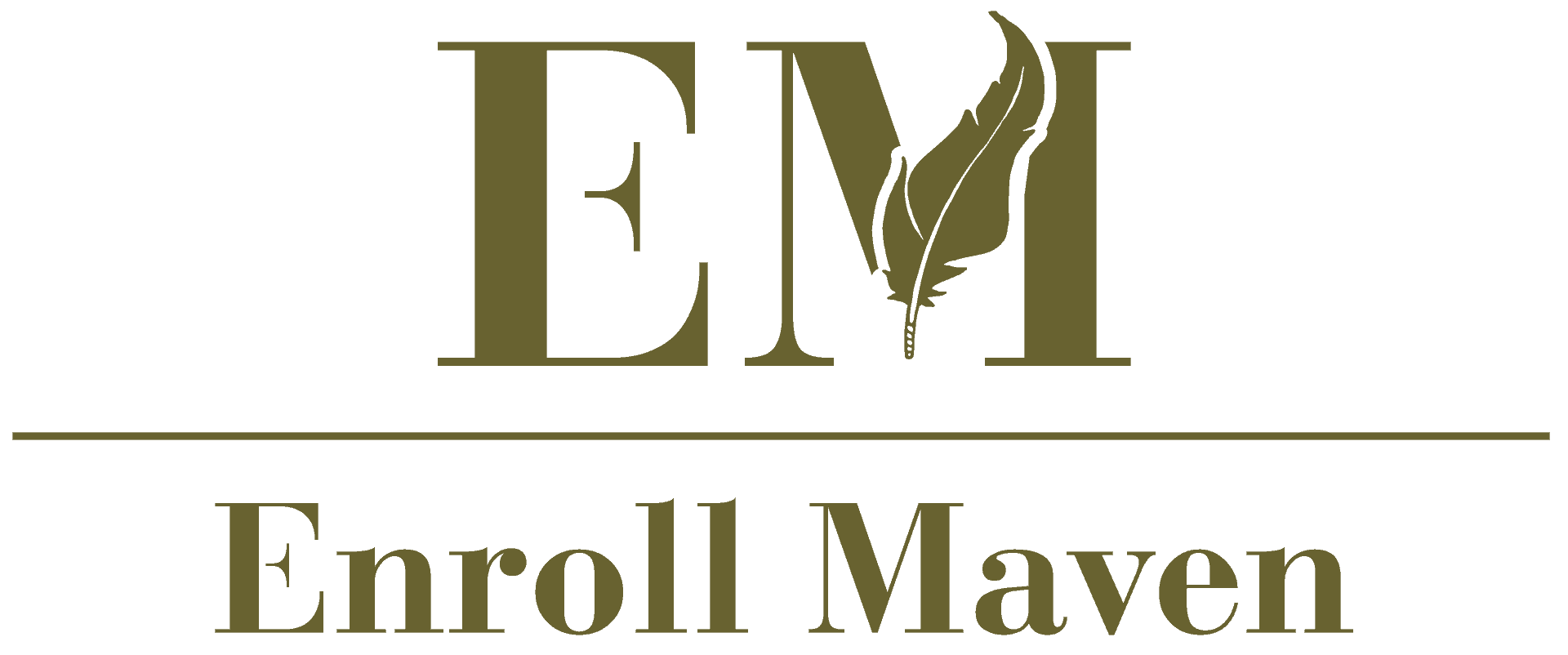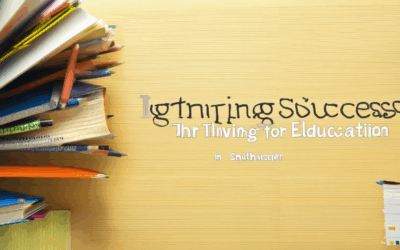Education is the cornerstone of personal and societal progress, unlocking doors to new opportunities and fostering lifelong learning. In today’s fast-paced world, the pursuit of educational growth has never been more vital. Whether you’re a student aiming to excel academically or a teacher dedicated to nurturing future leaders, understanding effective strategies to foster growth is key to unlocking your full potential. This comprehensive guide delves into proven methods and actionable tips designed to help both students and educators thrive. From cultivating a growth mindset to leveraging educational opportunities, we’ll explore how to create a supportive environment where learning flourishes naturally. Join us as we uncover the secrets to igniting educational growth and empowering individuals to achieve their goals.
Key Takeaways
– Students can achieve measurable growth by combining academic assessments with social-emotional evaluations, ensuring holistic development.
– Teachers can effectively track progress using pre- and post-assessment tests, classroom observations, and detailed progress reports.
– Effective educational measurement is vital for monitoring learning outcomes and aligning teaching strategies with long-term curriculum goals.
What Are the 7 Strategies That Promote Learning?
- Active Learning: Engage with the material actively through discussions, debates, or teaching others. This enhances retention and understanding.
- Spaced Repetition: Review and practice information at increasing intervals over time to reinforce memory and knowledge retention.
- Crosswalk Connections: Connect new information with what you already know to create meaningful relationships and improve comprehension.
- Interleaved Practice: Mix different topics or skills during study sessions to enhance problem-solving abilities and adaptability.
- Elaborative interrogation: Ask yourself questions and seek deeper explanations to uncover underlying concepts and connections.
- Metacognition: Reflect on your own thinking process to better understand your strengths and areas needing improvement, guiding more efficient study habits.
- Teaching Others: Explain concepts to others or pretend to teach, which reinforces your own understanding and identifies gaps in knowledge.
How to Teach Growth Mindset to Students in 5 Steps
A growth mindset is the belief that abilities and intelligence can be developed through dedication, hard work, and perseverance. Educators play a vital role in fostering this mindset among students. Below are five practical steps to help cultivate a growth mindset in the classroom:
- Praise Effort Over Intelligence : Instead of focusing solely on a student’s intelligence or talent, highlight their effort, persistence, and hard work. For instance, you might say, “I’m impressed by how much effort you put into that project. Keep pushing forward, and you’ll continue to improve.”
- Encourage a Love for Learning : Create an environment where students feel excited about learning. Allow them to explore topics they find interesting and engage in hands-on activities that spark their curiosity. For example, you could incorporate group discussions, field trips, or interactive projects to make learning enjoyable.
- Help Students Set Personal Goals : Guide students in setting realistic, achievable goals. Whether it’s mastering a skill, completing a project, or improving grades, having clear objectives gives them direction and motivation. Celebrate their progress and remind them that every step forward is part of their growth journey.
- Teach Resilience Through Challenges : Present challenges that push students beyond their comfort zones. Encourage them to view obstacles as opportunities to learn and grow. Share stories of successful individuals who faced failures and used those experiences to achieve their goals.
- Model a Growth Mindset Yourself : As a teacher, you set the tone for your classroom. Share your own experiences of learning and growing, and discuss how you overcome challenges. By demonstrating a growth mindset, you inspire students to embrace their own potential.
By consistently implementing these steps, you can help students develop a growth mindset that empowers them to tackle future challenges with confidence and determination.
How Can an Increase in Educational Opportunities Increase Growth?
Educational opportunities play a pivotal role in fostering economic growth by enhancing individual and societal capabilities. Here’s a breakdown of how increased access to education can drive growth:
1. Workforce Development
An educated workforce is more productive and efficient. When individuals acquire skills through formal or informal education, they become better equipped to contribute to the labor market. This leads to higher productivity levels, which ultimately translates to increased economic output.
2. Innovation and Entrepreneurship
Education is a catalyst for innovation. Educated individuals are more likely to engage in creative problem-solving and entrepreneurial activities. They are better prepared to identify market needs and develop solutions, driving advancements in technology, business practices, and industries.
3. Social Mobility and Consumer Spending
Improved education often correlates with higher income levels and greater financial stability. As people ascend the socioeconomic ladder, they have more disposable income to spend on goods and services, fueling consumer-driven markets and overall economic activity.
4. Economic Resilience
A well-educated population is better equipped to adapt to changes in the job market and economic conditions. Education provides individuals with diverse skill sets, enabling them to navigate challenges and seize opportunities during economic downturns.
5. Reduced Dependency on Government Support
Education reduces reliance on public assistance by empowering individuals to secure stable jobs and improve their quality of life. This self-sufficiency contributes to a healthier economy and lowers the burden on social welfare systems.
6. Global Competitiveness
A knowledgeable workforce enhances a nation’s ability to compete on the global stage. Countries with high levels of education attract investment, international trade, and skilled professionals, further accelerating economic growth.
- Educational Attainment Drives GDP: Countries with higher levels of education experience faster GDP growth because educated workers contribute more to the economy.
- Lifelong Learning: Continuous education keeps workers updated with the latest skills and technologies, ensuring businesses remain competitive.
- Societal Progress: Education promotes cultural advancement, ethical values, and civic engagement, all of which are essential for sustainable development.
By investing in education, societies can unlock vast potential, leading to sustained growth and prosperity. Ensuring access to quality education for all individuals is a cornerstone of long-term economic success.
Enroll Maven offers valuable resources and tips for students, parents, and educators looking to maximize educational opportunities. Explore their platform to discover how education can transform lives and economies.
Examples of Student Growth Measures
Student growth measures are tools used to assess and track the progress of students over time. Here are several examples:
- Academic Assessments: Tests and exams that measure academic knowledge and skills, such as standardized tests (e.g., SAT, ACT), subject-specific exams, and formative assessments.
- Behavioral and Social-Emotional Growth: Tools that evaluate social skills, emotional well-being, and behavior patterns, such as social skills assessments and surveys measuring self-esteem or resilience.
- Attendance Tracking: Metrics that monitor how consistently students attend classes, which is often tied to academic performance and graduation rates.
- Graduation Rates: Data indicating the percentage of students who graduate from high school on time, reflecting long-term academic success.
- Class Participation Observations: Evaluations based on how actively students engage in class discussions, contribute to group work, and participate in learning activities.
- Parent and Teacher Feedback: Surveys or interviews conducted by educators and parents to gather insights on a student’s growth and development.
How Teachers Measure Student Growth
Teachers employ various methods to assess student growth, focusing on both academic and developmental progress. These approaches aim to provide a comprehensive understanding of a student’s learning journey.
1. Pre- and Post-Assessment Tests
One common method involves administering pre- and post-assessment tests to gauge a student’s knowledge before and after instruction. These tests often cover essential skills and concepts, allowing teachers to track progress over time.
2. Observation and Participation
Teacher observations play a crucial role in understanding behavioral and emotional growth. By monitoring engagement, interaction, and classroom participation, teachers can identify areas of development and support needs.
3. Portfolio Evaluation
Students often maintain portfolios showcasing their work, which serves as evidence of their growth. Teachers review these collections to assess improvements in creativity, complexity, and mastery of subject matter.
4. Benchmark Assessments
Benchmark assessments are tools used to compare a student’s performance against established standards. These tests help determine if students are meeting grade-level expectations and indicate areas needing intervention.
5. Progress Reports
Regular progress reports allow teachers to document and communicate student growth to parents. These reports highlight strengths, areas for improvement, and specific strategies for further development.
6. Standardized Testing
While not always part of daily teaching, standardized tests like state assessments provide a measure of overall academic growth. They offer a comparison against peers and help identify individual achievements and challenges.
7. Surveys and Questionnaires
Surveys distributed to students, parents, and peers can offer valuable insights into social-emotional growth. These tools help teachers understand how students perceive their own development and school experiences.
Enroll Maven provides additional resources and strategies to enhance teaching practices and student outcomes. Explore our platform for more insights and tools tailored for educators.
[Visit Enroll Maven](https://enrollmaven.com/) for more information on supporting student growth and improving educational outcomes.
Example of Educational Measurement
Educational measurement involves assessing various aspects of education, including student performance, knowledge, skills, and development. A common example is the use of standardized tests to evaluate academic proficiency. For instance:
- Standardized Tests : Instruments like the SAT or ACT measure a student’s readiness for college-level coursework. These exams assess skills in critical thinking, math, reading comprehension, and writing.
- Formative Assessments : Tools such as quizzes or projects created by teachers to monitor progress during the learning process. These assessments provide immediate feedback for improvement.
- Surveys and Questionnaires : Schools may administer surveys to gather data on student engagement, satisfaction, and learning experiences. This helps in understanding educational needs and effectiveness of teaching methods.
These measurements help educators identify strengths and weaknesses, track progress, and make informed decisions to enhance the educational experience.
Importance of Educational Measurement
Effective educational measurement ensures that schools and educators can: – Monitor student learning outcomes – Identify areas needing improvement – Tailor teaching strategies to meet diverse needs – Ensure alignment with educational goals and curriculum standards
Challenges in Educational Measurement
While essential, educational measurement faces challenges such as: – Ensuring fairness and accessibility – Avoiding biases in test design – Validating the accuracy and reliability of assessment tools – Addressing the diversity of learning styles and capabilities
By addressing these challenges, educational institutions can develop more robust systems for evaluating and improving educational processes.
Explore more educational resources to discover how measurement can enhance learning outcomes.









0 Comments